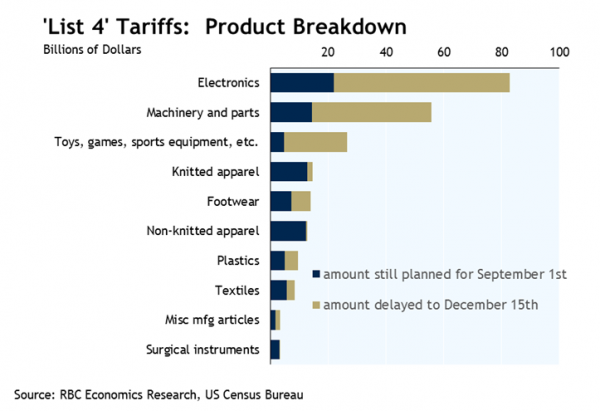- The USTR today announced a delay on planned 10% China tariff hikes in September for ‘certain’ products
- Those ‘certain’ products amount to ~60% of the total products targeted, by our count
- Trade uncertainty is not going away any time soon
The delay from September 1 to December 15 applies to only a portion of the remaining ‘$300 billion’ (more like $265 billion by our count) worth of annual imports from China not already targeted with 25% tariff rates under the Trump administration. The delay applies to about 15% of the product groups among ‘List 4’ products previously identified as subject to additional 10% tariffs in September, by our count. But that 15% includes popular consumer products like telephones, video games, and toys. It adds up to ~60% of the total dollar value – or about $156 billion worth of annual imports.
In short, the tariff hike the US has planned for September looks a lot smaller than it did previously. And although ostensibly to prevent price hikes over the Christmas shopping period, the Trump administration backing off to a degree does arguably leave some reason to believe that a broader US-China deal could still be reached at some point. But, for now, earlier tariff hikes are still in place and still imposing significant additional costs, particularly on the US industrial sector. The latest move may represent some easing in tensions between the US and China – moving back closer to a simmer than a boil – but uncertainty around future trade policy is not going away any time soon. And that uncertainty will continue to weigh on business investment and sentiment.














